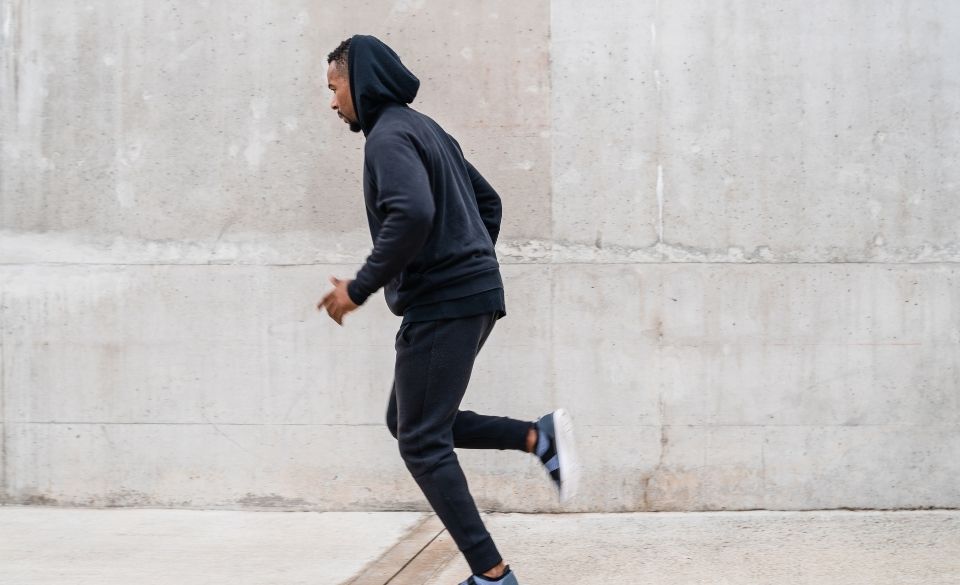
How To Prevent Runners Chafing? A Complete Guide
Page Contents
Chafing and running are all too common, especially after long runs, or when your clothes become wet.
Chafing can be crippling for a runner, especially those who run long distances or train often. Luckily there are some ways to prevent runners from chafing.
In this article, we discuss the common causes of chafing, how you can prevent it and how to stop chafing when you are running.
What Is Runners Chafing?
Chafing results when there is friction between either skin, clothing, or both.
Chafing on the run usually happens in areas like the thighs, groin, armpits, and nipples. However, some may experience chafing behind the heel and other parts of the foot, if incorrect shoes are worn.
There are two types of chafing a runner usually experiences. These are skin-on-skin contact and fabric-to-skin contact.
Skin-on-skin contact happens when two parts of the body rub together. This is generally in the thigh region or underarm area.
Although chafing is worse in wet conditions, dry skin rather than moisturized skin is more prone to rubbing.
Fabric to skin chafing happens when a piece of clothing rubs against your skin and starts to aggravate it. The most common pieces of clothing that aggravate a runner’s skin are sports bras, leggings, and t-shirts.
Fabrics can often cause more chafing than skin-to-skin contact when they get wet or sweating. Hence why many marathon runners complain about chafing after an event.
Because chafing causes the protective layer of the skin to break, it can leave the skin open to infection if it is left untreated.
Luckily, runner’s chafing is not a serious condition. However, it can lead to infection and time away from running if left untreated.
Why Are Runners More Susceptible To Chafing?
Runners and other endurance athletes are more likely to experience chafing because of friction. Friction is caused by repetitive movements, skin-to-skin contact, fabric-to-skin contact, and sweat which are all common among endurance athletes.
One of the most common misconceptions is that runners that are overweight are more prone to chafing. However, this is simply not true. Chafing can happen to anyone and can occur on any part of the body.
Other reasons why you may experience chafing if you are a runner include:
– Loose-fitting clothes
– Non-breathable fabric
– Hot or humid weather
– Sensitive skin
– Large muscles
How To Stop Chafing When Running?
Luckily if you are prone to chafing when you run, there are some ways to stop it from happening.
First, start by applying an anti-chafing cream or lubricant to areas of the body prone to chafing.
If your clothing is the main culprit, anti-chafing cream can also help to create a barrier between your skin and clothing.
This barrier will only last a short period of time. So, if you are running a marathon or competing in another event, you might need to change the type of clothing (material, size, design) you are wearing.
The best clothing to prevent chafing is snug-fitting clothing that is breathable, rather than loose and baggy clothing.
Alternatively, if you are chafing on areas like the nipples, you may be able to use some protective tape to create a barrier between the skin and clothing. For example, plasters, sports tape, or brands like Compeed can all help.
If you are chafing on the heel area or other parts of the foot, you may need to look at your shoes. Chafing on the heel region is usually a sign that the shoes fit your feet poorly or are too large for you.
How to Treat Runners Chafing?
1. To treat runners chafing, you must first wash the affected area. This can be done by using warm water and antibacterial soap. The antibacterial soap can help ward off bacteria that can get into exposed skin.
2. Next make sure you pat dry the affected area. You mustn’t rub the area, as this will make the chafing worse. Once you have pat dried the affected area, you should then apply a healing ointment, such as Sudocrem or another form of a cream that contains zinc oxide.
3. Once you have applied cream to the affected area, try to prevent any clothing from rubbing against the area. That means wearing loose-fitting clothing or keeping the area of the body uncovered as long as you can.
If you want to heal the chafing overnight, you can apply a restorative ointment before bedtime. This can help heal the chafing quicker than other methods. However, because of this, you have to avoid touching the affected area for 12 hours.
It is also important during these first 12 hours that you let the fresh area cool down the area, and help speed up recovery. However, this may not always be possible if you experience chafing after a late run.

Which Fabrics Should Runners Wear To Avoid Chafing?
There are a few fabrics you should stay away from if you’re a runner. The most known is cotton. Cotton can soak up sweat and cause the wet fabric to rub against your skin. Other fabrics like wool and velvet are other fabrics you should stay away from if you’re a runner.
While there are some specialist running clothing that prevents chafing, if it is the wrong size for you, it can still cause you problems. Hence why it is important to buy the right size of clothing. Then you will be less likely to experience runners chafing.



